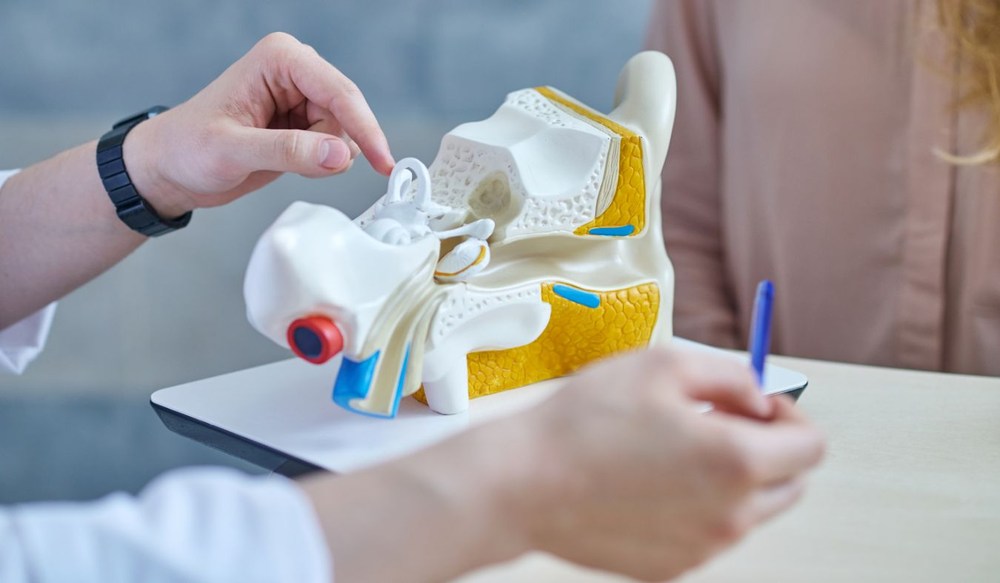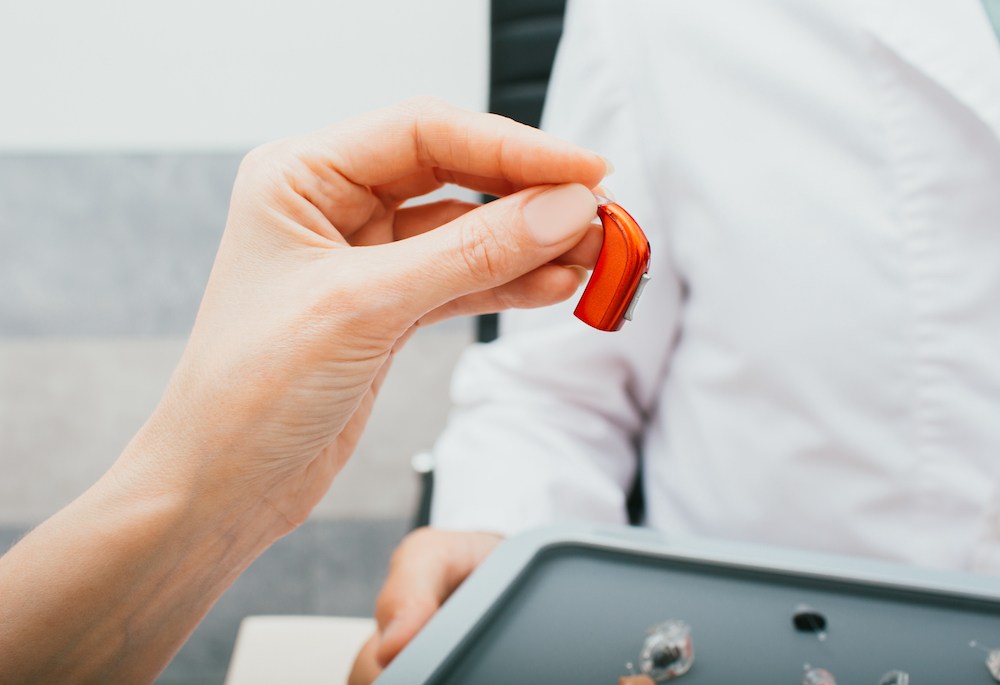Why Does Hearing Loss Often Go Unnoticed?
Admitting you have hearing loss feels a lot like admitting you’re
What You Should Know About the Risks of Over-The-Counter Hearing Aids CLICK HERE →

By: admin | August 28, 2024
If you’re someone who loves to stay active, you might wonder how your hearing aids will handle the strain of exercise. This is a common concern among many who rely on these devices for better hearing. But don’t worry, with the right precautions, hearing aids can easily become a part of your fitness routine. You just need to consider the impact of sweat, movement and background noise when using hearing aids during exercise. Paying attention to these areas is key to maximizing the effectiveness of your device during physical activity and ensuring its longevity. Once you understand these factors, you can continue to enjoy your favorite workouts without compromising on clear sound reception or risking damage to your hearing aid.
Hearing aids play a vital role in maintaining an active lifestyle without sacrificing your ability to hear clearly. When you’re exercising, your hearing aids do more than just amplify sound. They help you stay aware of your surroundings, keep you safe and enhance your overall workout experience.
The performance of your hearing aids during physical activity largely depends on how well they are maintained and protected. Sweat and moisture can potentially damage the device, but with proper care and use of protective measures such as sweatbands or covers, this risk can be minimized. It’s also important to ensure that the hearing aids are securely fitted so they don’t fall out during intense movements.
Another factor to consider when using hearing aids during exercise is the management of background noise. Gyms or outdoor environments often have a lot of ambient noise which can interfere with the clarity of sound through your hearing aid. However, many modern devices come with features that reduce background noise, making it easier for you to focus on sounds that matter most – like instructions from a fitness trainer or alerts from workout equipment.
Exercising with hearing aids can present some unique situations. The first hurdle you may encounter is dealing with sweat and moisture. Intense workouts can lead to perspiration, which might affect the functionality of your hearing aids. Additionally, vigorous movements during exercise could dislodge your devices, causing them to fall out or shift position. But don’t let these challenges discourage you! With proper precautions and care, you can continue enjoying your workouts while benefiting from improved hearing.
Sweat is a common companion of any good workout, but did you know it can affect your hearing aids? This is because moisture, including sweat, can potentially damage the electronic components of these devices.
According to a study published in the Journal of the American Academy of Audiology, up to 50% of all hearing aids repairs are related to damage caused by moisture and humidity. This highlights the importance of protecting your hearing aids from sweat during workouts. By taking appropriate measures, you can ensure your device continues to function optimally even under sweaty conditions.
Have you ever wondered how your physical activity might impact the performance of your hearing aids? It’s a question worth asking, especially if you’re someone who enjoys an active lifestyle.
Physical activity, whether it’s a brisk walk in the park or an intense gym session, can indeed influence how your hearing aids function. Movement can sometimes cause hearing aids to shift or fall out, particularly during high-intensity workouts. This doesn’t just pose a risk of losing them but also affects their ability to deliver clear and consistent sound.
Additionally, increased heart rate and blood flow during exercise can alter the way you perceive sound. This means that what you hear during physical activity might be slightly different from what you hear at rest. But don’t worry! Many modern hearing aids come equipped with features that adapt to changes in your environment – including those brought on by exercise.
Background noise can be a real challenge during workouts, especially when you’re trying to focus on your exercise routine. Whether it’s the clatter of weights, chatter from fellow gym-goers or traffic noise from an outdoor run, these sounds can often interfere with the clarity of your hearing aids.
However, it’s important to know that many modern hearing aids are designed to manage this issue effectively. They come equipped with advanced technology that reduces background noise and enhances important sounds like a coach’s instructions or safety warnings. This means you can keep up with your fitness routine without missing out on important audio cues.
Handling background noise doesn’t mean you have to compromise on your workout intensity or location. With the right hearing aid features and settings in place, you can enjoy clear sound reception even in noisy environments. So go ahead and pump those weights or hit that running trail – your hearing aids have got you covered!
Transitioning from the gym to your daily life, the importance of a well-fitted hearing aid cannot be overstated. It plays a key role in ensuring both comfort and efficiency, especially during physical activities like exercise. A proper fit not only keeps your hearing aids securely in place but also enhances sound quality and reduces feedback.
Imagine this – you’re in the middle of an intense workout, and your hearing aid starts to feel uncomfortable or even falls out. That’s not something you want to deal with, right? With a properly fitted device, you can focus on your routine without worrying about discomfort or dislodging. When it comes to hearing aids and exercise, the right fit makes all the difference!
Choosing the right hearing aid style for working out is essential to ensure comfort, stability and optimal performance during physical activities. In-the-ear (ITE), behind-the-ear (BTE) and in-the-canal (ITC) hearing aids each offer unique benefits that can enhance your workout experience.
ITE hearing aids are a popular choice for workouts due to their secure fit. Since they sit directly in the outer ear, they are less likely to move around or fall out during vigorous activities. This stability can be especially beneficial during exercises like running, cycling or weightlifting. ITE hearing aids are also relatively easy to adjust and remove, making them convenient for quick changes or adjustments while on the go. Their slightly larger size compared to other styles allows for a more robust battery, which can be advantageous for extended workout sessions.
BTE hearing aids are known for their durability and versatility, making them a solid option for those who engage in a variety of workouts. BTE hearing aids rest comfortably behind the ear, with a thin tube or wire connecting to an earmold or dome inside the ear canal. This design keeps the main components away from sweat and moisture, which can be a concern during intense physical activities. Additionally, BTE models often come with more advanced features, such as Bluetooth connectivity, which can be useful for streaming music or taking calls during a workout.
Canal-worn hearing aids are ideal for those who prioritize discretion and comfort. These hearing aids sit partially in the ear canal, making them less visible and providing a snug fit that stays in place during exercise. The compact design of ITC hearing aids allows for a natural hearing experience with minimal interference, which is beneficial in maintaining awareness of your surroundings during outdoor activities. While smaller in size, ITC hearing aids are designed to provide excellent sound quality, making them a great option for those who want to enjoy music or follow along with guided workout routines while staying active.
Just as you cool down after a vigorous workout, your hearing aids also need some post-exercise care. Sweat and grime can accumulate on your devices during physical activity. This makes cleaning an essential part of your hearing aid maintenance routine.
Cleaning your hearing aids after exercise is not a complicated process. Start by gently wiping the surface with a dry, soft cloth to remove any sweat or dirt. Do not use water or cleaning solutions unless recommended by your hearing instrument specialist, as these could potentially damage the device.
The last step in maintaining the longevity of your hearing aids involves storing them correctly. After cleaning, place them in a dry storage case away from heat and direct sunlight. This helps prevent moisture build-up and ensures optimal performance for future use. A small but significant aspect of this routine is checking the battery compartment for any signs of corrosion or damage due to sweat exposure.
Taking care of your hearing aids doesn’t stop at just using them correctly; it extends to proper cleaning and storage practices too! So next time you finish that heart-pumping workout session, don’t forget to give some TLC to your trusty hearing companions!
Making adjustments to your workout routine can go a long way in accommodating your hearing aid use. This doesn’t mean giving up on your favorite exercises, but rather tweaking them to ensure the safety and effectiveness of your hearing aids.
For instance, you could opt for sweat-resistant accessories or take regular breaks to dry off excess sweat. Additionally, choosing low-noise environments for exercise can enhance the performance of your hearing aids. By making these simple modifications, you’ll be able to maintain an active lifestyle without compromising on your hearing needs. These small changes not only protect your devices but also enhance their functionality during workouts, offering you a seamless and enjoyable exercise experience.
In your quest for a harmonious balance between an active lifestyle and effective hearing aid use, seeking personalized advice from a hearing instrument specialist can be incredibly beneficial. These professionals possess the expertise to guide you through the nuances of using hearing aids during exercise, ensuring you get the most out of your devices.
In addition to offering valuable advice on handling exercise-related challenges with hearing aids, they can also help fine-tune your devices for optimal performance during workouts. This could include adjusting settings to manage background noise or recommending specific models that are better suited for physical activity. Your journey towards an active lifestyle with hearing aids need not be a solitary one – with the right guidance from a hearing specialist, it can be a smooth and rewarding experience.
Whether you’re a fitness enthusiast or someone just starting out, understanding how to use and care for your hearing aids during physical activity can significantly enhance your workout experience. From protecting them against sweat to ensuring a secure fit, these best practices are designed to help you make the most of your hearing aids while exercising.
But remember, every individual is unique and so are their hearing needs. That’s why at Armand’s Hearing Center we believe in providing personalized guidance tailored to each person’s specific requirements. If you have any questions or need further advice on using hearing aids while exercising, our team of experienced professionals is here to help.
Let us assist you in achieving an active lifestyle without compromising on clear sound reception or risking damage to your hearing aid. Contact us today – because when it comes to balancing fitness and effective use of hearing aids, we’ve got you covered!
Tags: benefits of hearing aids, hearing aid basics, hearing aid selection tips

Admitting you have hearing loss feels a lot like admitting you’re
By: admin | October 20, 2025

Beach trips can make hearing aid wearers nervous, and for good reason.
By: admin | July 29, 2025

When you need hearing aids, you need them to work reliably every day. They
By: admin | June 20, 2025
